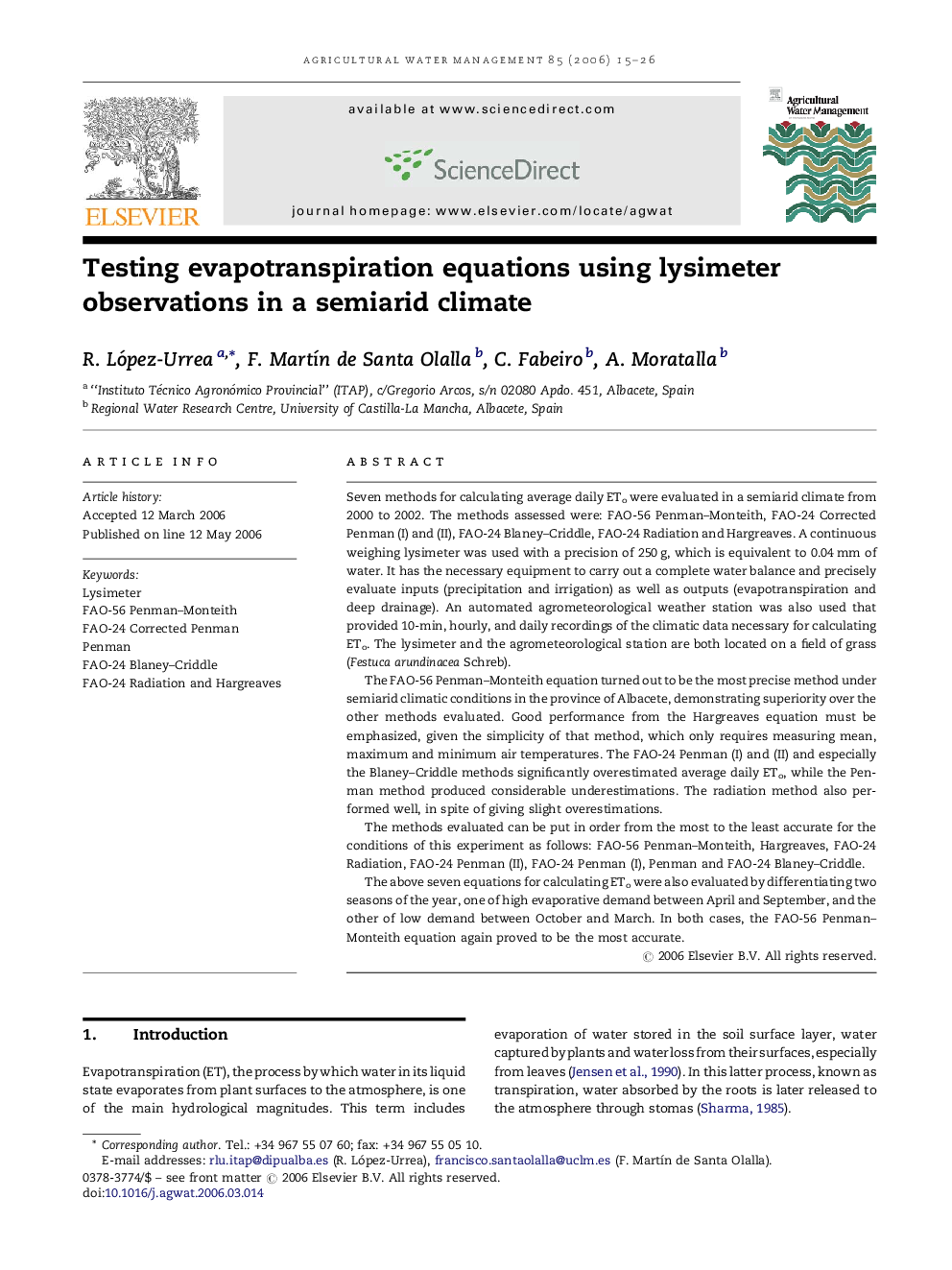| کد مقاله | کد نشریه | سال انتشار | مقاله انگلیسی | نسخه تمام متن |
|---|---|---|---|---|
| 4480461 | 1622987 | 2006 | 12 صفحه PDF | دانلود رایگان |

Seven methods for calculating average daily ETo were evaluated in a semiarid climate from 2000 to 2002. The methods assessed were: FAO-56 Penman–Monteith, FAO-24 Corrected Penman (I) and (II), FAO-24 Blaney–Criddle, FAO-24 Radiation and Hargreaves. A continuous weighing lysimeter was used with a precision of 250 g, which is equivalent to 0.04 mm of water. It has the necessary equipment to carry out a complete water balance and precisely evaluate inputs (precipitation and irrigation) as well as outputs (evapotranspiration and deep drainage). An automated agrometeorological weather station was also used that provided 10-min, hourly, and daily recordings of the climatic data necessary for calculating ETo. The lysimeter and the agrometeorological station are both located on a field of grass (Festuca arundinacea Schreb).The FAO-56 Penman–Monteith equation turned out to be the most precise method under semiarid climatic conditions in the province of Albacete, demonstrating superiority over the other methods evaluated. Good performance from the Hargreaves equation must be emphasized, given the simplicity of that method, which only requires measuring mean, maximum and minimum air temperatures. The FAO-24 Penman (I) and (II) and especially the Blaney–Criddle methods significantly overestimated average daily ETo, while the Penman method produced considerable underestimations. The radiation method also performed well, in spite of giving slight overestimations.The methods evaluated can be put in order from the most to the least accurate for the conditions of this experiment as follows: FAO-56 Penman–Monteith, Hargreaves, FAO-24 Radiation, FAO-24 Penman (II), FAO-24 Penman (I), Penman and FAO-24 Blaney–Criddle.The above seven equations for calculating ETo were also evaluated by differentiating two seasons of the year, one of high evaporative demand between April and September, and the other of low demand between October and March. In both cases, the FAO-56 Penman–Monteith equation again proved to be the most accurate.
Journal: Agricultural Water Management - Volume 85, Issues 1–2, 16 September 2006, Pages 15–26